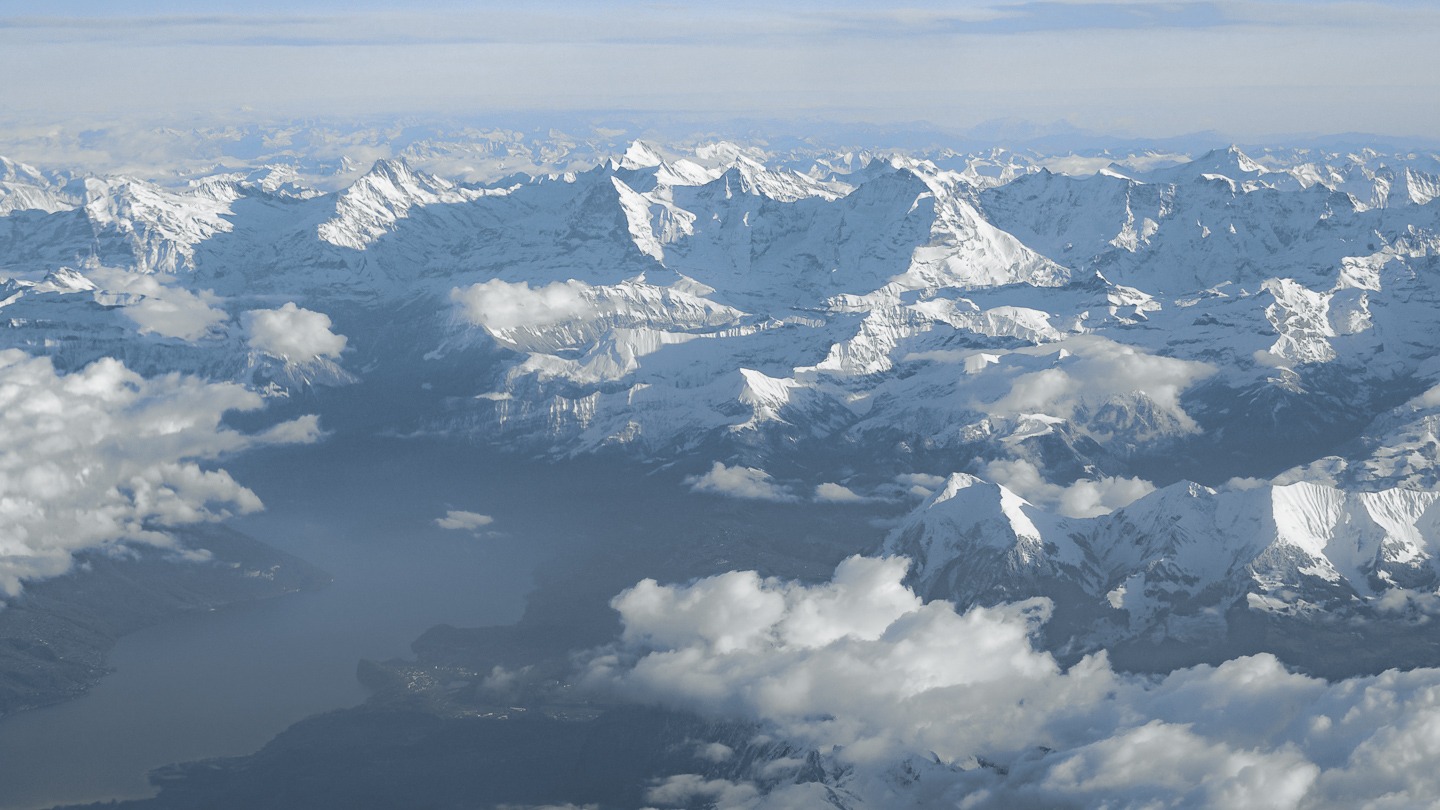Aerials from airliners often leave something to be desired. The fast, bumpy nature of a flight and the poor optical properties of the aircraft’s multi-layered windows are the main obstacles. Here are some suggestions for dealing with them.
- Seating
Choose a window seat on the side of the plane that offers a view with the sun, not against it (the latter will accentuate blemishes in the window such as scratches, dirt etc.). To find out about the flight route, check the pattern of previous flights on a platform like flightradar24.com. If possible, book a seat in front of the wing to avoid the blur caused by hot engine exhaust. - Photo Gear
No matter how good your camera is, you won’t be able to overcome the limitations imposed by atmospherics and the plane’s windows. For this reason, a decent smartphone is often good enough. - Camera Angle
Try to hold your camera at an angle of about 90 degrees to the plane of the window. The more you tilt the camera, the more the imperfections of the window will show through.
- Composition
Go a little wider than you intended to give yourself more flexibility when cropping in post. Getting the composition right in camera can sometimes be a challenge, depending on how bumpy the flight is. - Focal Lengths
Avoid extreme focal lengths. They will either bring the window frame into the picture (wide angle) or accentuate the imperfections of the window (telephoto). - Shutter Speed
To avoid motion blur, use a faster shutter speed than usual, for example between about 1/250 (wide angle) and 1/2000 (telephoto). - Cleaning the Window
Clean the window with a lens or eyeglass cloth. Passengers tend to lean against it, leaving grease and fingerprints.
Enjoy your trip!



